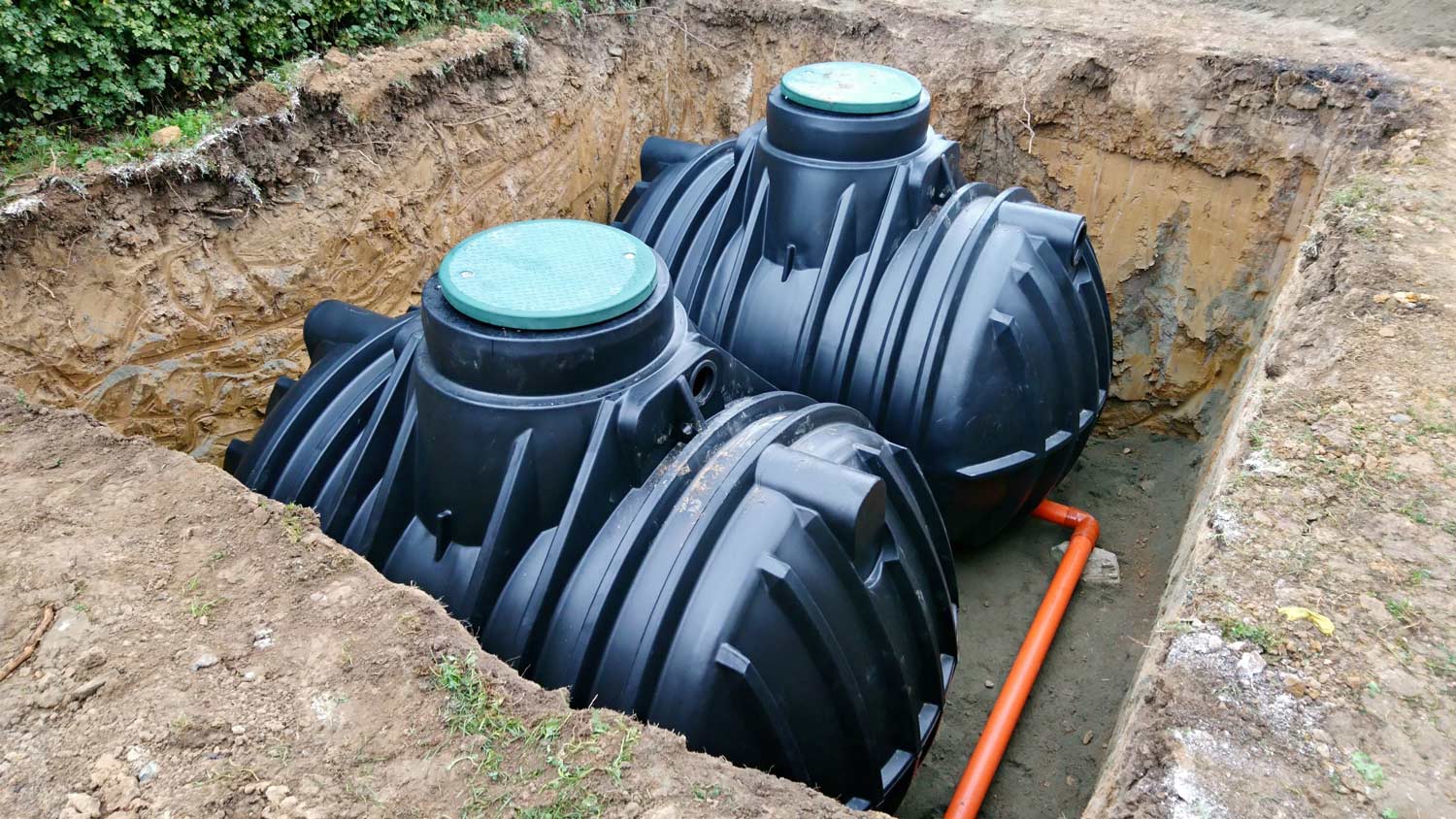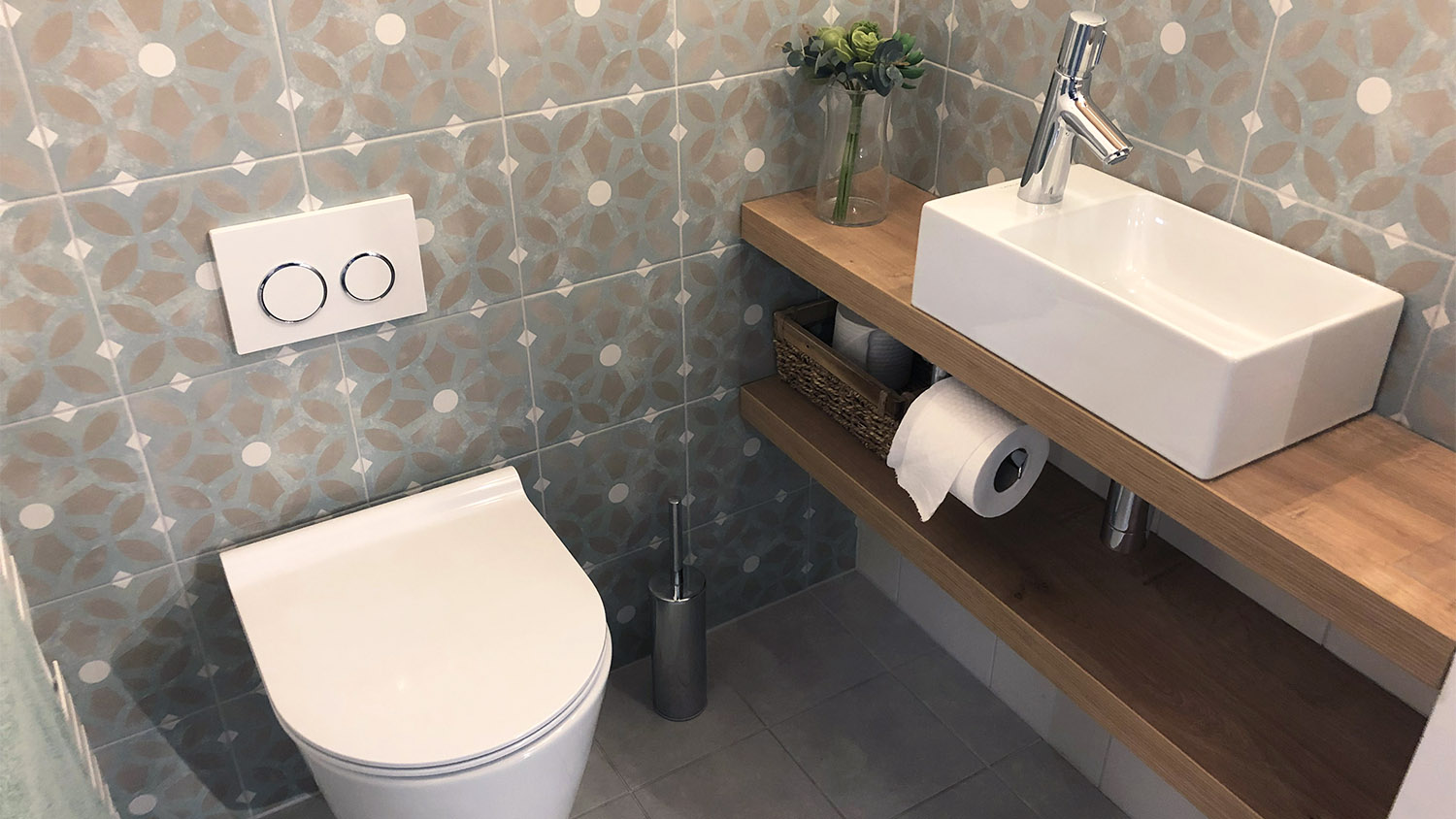
The average cost to connect to a public sewer line in Columbus, OH, depends on the linear footage, piping material, local regulations, and more.
Don’t waste time on the wrong septic system


Cisterns are holding tanks that can be used for fresh water or wastewater.
Septic tanks are only used for wastewater.
Cisterns don’t filter water and need to be emptied about once a month.
Septic tanks filter water and need to be pumped every 3–5 years.
If you’re looking for a new septic system, there can be a lot of options to sift through, especially when most of them just look like big underground tanks. Take a closer look at two of these underground tanks—cisterns and septic tanks— and examine the differences between these popular septic system options to help you find the best one for your home.

Cisterns and septic tanks are both sturdy tanks designed to hold liquids. They’re typically placed underground within a close distance of the house so that wastewater can travel quickly into the tank.
The primary difference between cisterns and septic tanks is that cisterns are designed to hold drinkable water and need to be emptied and refilled. Septic tanks are meant to hold wastewater and are emptied far less frequently.
| Purpose | Drinking water or sewage | Sewage |
| Materials | Concrete, fiberglass, steel, or plastic | Concrete or fiberglass |
| Location | Above or below ground | Below ground |
| Safety Ratings | FDA-approved | Not FDA-approved |
| Construction | Single tank with inflow and one opening | Divided tank with inflow, two openings, and outflow |
| Filtration | No filtration | Basic waste filtration |
| Internal Pressure | Can handle changes in pressure and fill amount | Can’t handle large pressure changes |
| Installation Cost | Average of $7,000 | Average of $8,000 |
| Maintenance | Pumped once a month | Pumped 3 – 5 years |
Although cisterns can be used as a sewage system to hold wastewater, that’s not their primary purpose—they’re mainly used to hold fresh, clean water that can be used for drinking water for a home or business or as fresh water for animals and agriculture. A cistern’s water source is often rainwater. Some people even use rainwater cisterns as an alternative to wells for a drinking water source.
Septic tanks have one dedicated purpose—holding sewage, specifically two types of wastewater: graywater and blackwater.
Graywater is water that’s been used in your home and may contain things like soaps and cleaning products but is unlikely to contain any large amounts of bacteria. This type of water can be reused for non-drinking purposes like flushing toilets and cleaning cars.
Blackwater is wastewater that has a high bacteria content. This type of water isn’t safe to reuse without further treatment, like a filtration and cleaning process after it’s removed from your septic tank.
Most cisterns are most often made up of either concrete or plastic. You can find some made of fiberglass or steel, as well.
Plastic cisterns are lighter and easier to transport and may be located above ground to store drinking water.
Concrete cisterns are sturdier and are preferred for underground use.
Some concrete cisterns are even strong enough that you can drive on top of them, which makes it easy to place them almost anywhere on your property.
Septic tanks are usually made from concrete, though they may also include fiberglass. They’re also buried underground. Although they’re sturdy, it’s not recommended to place them anywhere where machinery or vehicles might drive on top of them so you don’t run the risk of costly septic tank repairs.
Since cisterns are most often used to hold water that’s of drinking quality, they’re required to meet FDA regulations for human consumption. Septic tanks only hold wastewater, so the materials used don’t need to meet any consumption standards.
Since cisterns are designed to hold liquids, they don’t have any extras. A cistern includes:
A single big tank
A separate input pipe for sewage, when it’s used for holding waste
No filtration system
Septic tanks are specifically intended for sewage, so they have a bit more to their makeup. Septic tanks include:
Internal compartments to help separate wastewater
An inflow pipe that opens into the first chamber
A partition wall that discourages solid waste from flowing into the second compartment
An outflow pipe, which is protected by a basic filtration system to prevent solids from entering the pipe
An initial filtration process for sewage so that cleaner liquids can be directed out of the tank and into the environment
An external leach field that returns the filtered wastewater back into the soil
Cisterns are designed to be regularly emptied and refilled, so they’re built with extra reinforcements to handle the changes in pressure. This reinforcement minimizes the risk of any structural failure in the walls.
Septic tanks are intended to stay consistently filled since the filtration system allows for outflow as well as inflow. As a result, they’re not designed for large pressure changes and don’t have the same structural reinforcement as a cistern.
Cistern systems are simpler to install than septic tanks and therefore generally cost less. Depending on the size, installing a cistern can range from $6,500 to $8,000, with an average of about $7,000.
The cost to install a new septic tank system can range from $3,500 to $12,000, with an average cost of about $8,000. Septic system installation includes the septic tank and the leach field.
Since septic cisterns don’t have any way for water to exit, they fill up much more quickly than septic tanks. In many cases, cisterns need to be pumped out about once a month, though that can vary by a few weeks, depending on the size of your tank and your home’s water usage. Cistern pumping usually costs between $300 to $600.
A septic tank requires a little less maintenance and should be pumped out every 3 to 5 years. On average, the cost of pumping a septic tank is about $400, though it can range from $300 to $600.

Cisterns and septic tanks both offer underground storage for wastewater, and both septic system types tend to be sturdy and reliable. The biggest decision-making factor when choosing between the two sewage systems is the volume of water you produce in your home.
Although septic tanks have a steeper installation cost, they have much lower maintenance fees in the long run. This is because the filtration and outflow system allows the tank to fill up more slowly than cisterns that have no way for wastewater to exit.
If you’re building a sewage containment system for a cottage or weekend home where you only use a little bit of water, cisterns are convenient and affordable. You also don’t need to plan for extra space for a leach field.
However, if you’re looking for a full-time water treatment system and you live in a home that has multiple water fixtures like taps, toilets, showers, and laundry machines, the costs to constantly empty a cistern can add up quickly. You’re usually better off installing a septic tank that can process wastewater through a drainage system and only needs to be fully pumped every 3 to 5 years.
No matter which you choose (or if you’re having trouble choosing and need a little help), a local septic tank company near you can handle all types of septic system installations, maintenance, and pumping for both cisterns and septic tanks so you can rest assured your sewage won’t become a problem later on.
From average costs to expert advice, get all the answers you need to get your job done.

The average cost to connect to a public sewer line in Columbus, OH, depends on the linear footage, piping material, local regulations, and more.

Need to know what sewer line replacement costs? This guide will help you prepare to budget for sewer line replacement done by local contractors.

Need to know what sewer line replacement costs in Seattle, WA? This guide will help you prepare to budget for sewer line replacement done by local contractors.

A clogged main sewer line can lead to sewage leaks in your yard or home. Look for these eight signs of a clogged septic line to fix this problem ASAP.

Not all cesspool messes need a total clean-out. Learn how to clean a cesspool so you know whether you can tackle it yourself and when to call in a pro.

When considering a home in a rural area, you may not have access to a municipal sewer system. Learn all about living with well water and a septic tank before taking the plunge.